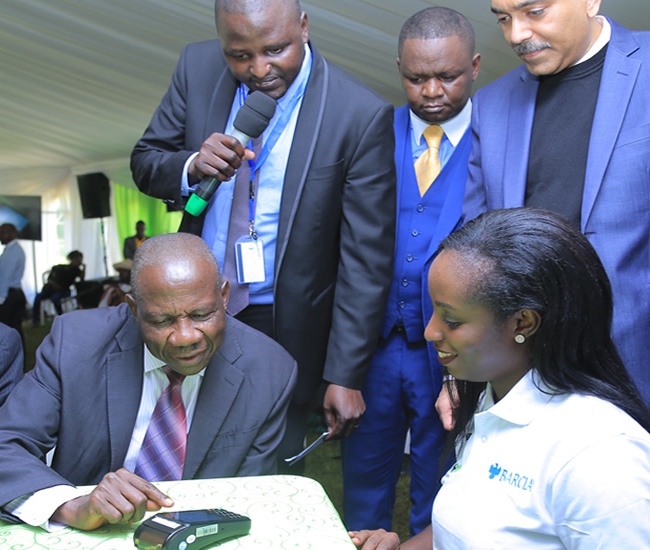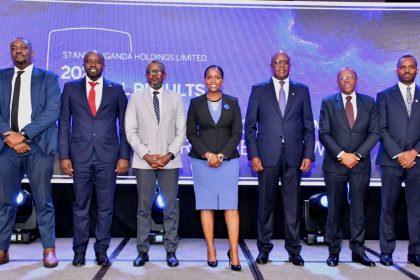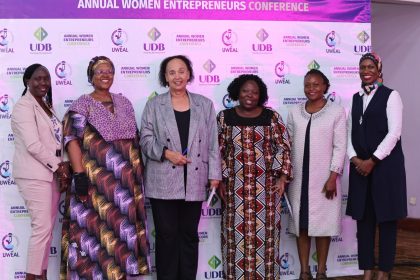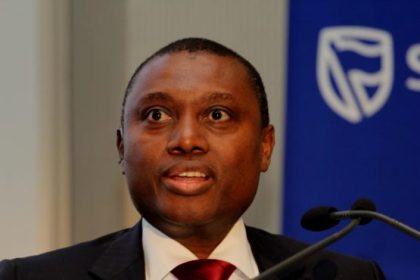Agent banking transactions top $1.4 billion in three years
 The shared agent banking network in Uganda was launched on 25th April 2018 by finance minister, Matia Kasaija, with two banks, namely, Absa Bank (formerly Barclays Bank) and Bank of Africa.
The shared agent banking network in Uganda was launched on 25th April 2018 by finance minister, Matia Kasaija, with two banks, namely, Absa Bank (formerly Barclays Bank) and Bank of Africa.
Agent banking has become one the most popular platforms for deposits and withdrawals across Uganda outside branch networks, second only to mobile money.
Currently involving 19 commercial banks, three years after formal operations began, the Shared Agent Banking System (SABS), has cumulatively processed 4.6 million transactions valued at UGX 5.14 trillion (about $ 1.4 billion).
It has enabled customers a greater access to affordable financial services with the ability to choose from a range of service providers. However due to the novelty of the project, Financial Sector Deepening (FSD) Uganda, the initiators of the project, had to contend with intense scrutiny during the early discussions with stakeholders, but as a driver for increased financial inclusion, this was an idea FSD Uganda could not afford to let go. The rapid uptake has proven them right. ‘Making Elephants Dance’ is the title of the FSD Uganda case study that details the story behind agent banking in Uganda.
According to Rashmi Pilllai, the FSD Uganda Executive Director, “The Shared Agent Banking System (SABS) in Uganda is the first of its kind on the African continent. We, at FSD Uganda are proud to have supported this idea since its inception. SABS was designed to address three key constraints in the market, increase the density of interoperable cash-deposit and withdrawal agents, especially in rural areas; secondly increase market competition on product, price, and customer satisfaction, and thirdly address the financial sector gaps of a digital economy.”
The inclusive finance landscape in Uganda is characterised by higher activity rates for mobile money compared to formal bank usage. According to the report, mobile money operators contributed significantly to formal financial inclusion as 56 pc of the adult population used mobile money. Only 11 pc of the adult population used banks and microfinance deposit-taking institutions.
The relative ease of registering for a mobile money account compared to a formal financial institution account partially contributed to the stark difference in uptake of mobile money compared to that of the formal financial accounts. Furthermore, there was a significant difference in the proliferation of mobile money agents compared to the access points of the formal financial institutions. However, it is worth noting here that end-users mostly used mobile money services for inter-personal transfers.
As of 2017, 76 pc of the Ugandan population resided in rural areas. This distribution of the population impacts the levels of access to formal financial services access points. An analysis of the proximity of financial access points for Ugandan residents in 2017 shows that most mobile money agents (62 pc) were within one kilometre of their homes while most banks (43 pc) were more than five kilometres from their homes.
Uganda already had a highly mature mobile money market with around 60,000-70,000 unique mobile money agents. There were and still are more mobile wallet customers in Uganda than bank account holders. If all 24 banks (at the time of setting up the shared agent banking network) invested in building their platforms and rolling out their agent banking services, the cost-of-service delivery would not be feasible for a country with only 18 million adults. Most importantly, it would not be a viable competitive offering by one industry – the banking industry – against the telecommunications industry.
As the agent banking industry was new and there was a limited understanding of the potential risk in the initial period, the Bank of Uganda (BoU) took a conservative approach. The regulator set out a host of requirements which collectively constrained the ability of financial institutions to obtain viable agents for their network and exacerbated provider concerns for agent exclusivity. These stringent requirements undermined the ability of banks to effectively compete with mobile money. The regulator was, however, intentional about creating an enabling environment for agent banking and financial inclusion.
The Uganda Bankers’ Association (UBA) then presented the concept of a shared agent network within the existing agent banking framework. BoU subsequently approved the concept and paved the way for its implementation.
This involved investing in the shared set up and infrastructural rails upon which each of the participating banks would compete on product, price, and customer satisfaction. The result was the establishment of a new legal entity, the Agent Banking Company (ABC) of Uganda, a joint venture between the UBA and Eclectics International, a technology company.
The introduction of agent banking guidelines in 2016 helped create a near-level environment for banks and mobile money operators. Banks could now use agent networks to offer financial products and services. Using agent networks allowed the banks to deepen their penetration across the country and enhance service to existing clients by increasing CICO points and agent service points. Banks were also eager to innovate to compete with mobile money operators.
Stakeholders from the world over have expressed interest in Uganda’s unique experience in establishing the shared agent banking network, its operational framework, the challenges experienced, lessons learned, and plans.

 Trading leads as main source of income for Ugandans
Trading leads as main source of income for Ugandans
 New leadership for bankers’ umbrella as total assets top $12 billion
New leadership for bankers’ umbrella as total assets top $12 billion
 Big fish in small pond Stanbic notches up $100m profit for 2023 topping previous figure by 15%
Big fish in small pond Stanbic notches up $100m profit for 2023 topping previous figure by 15%
 Inaugural event sets agenda for supporting women-owned businesses
Inaugural event sets agenda for supporting women-owned businesses
 Standard Bank Group reports $2 billion earnings up 27% from 2022
Standard Bank Group reports $2 billion earnings up 27% from 2022
 Stanbic Bank Uganda Chief Executive elevated to regional role in Nairobi
Stanbic Bank Uganda Chief Executive elevated to regional role in Nairobi
